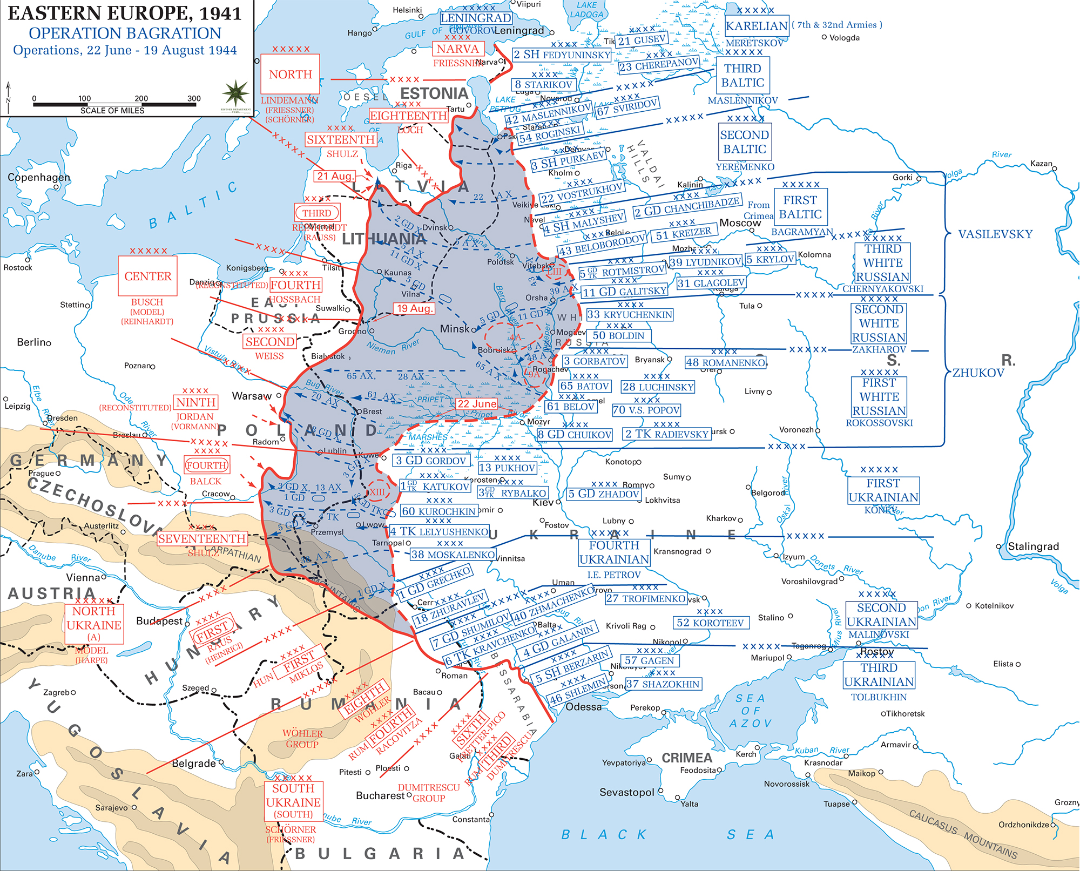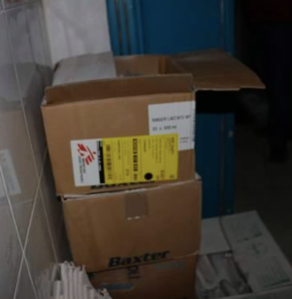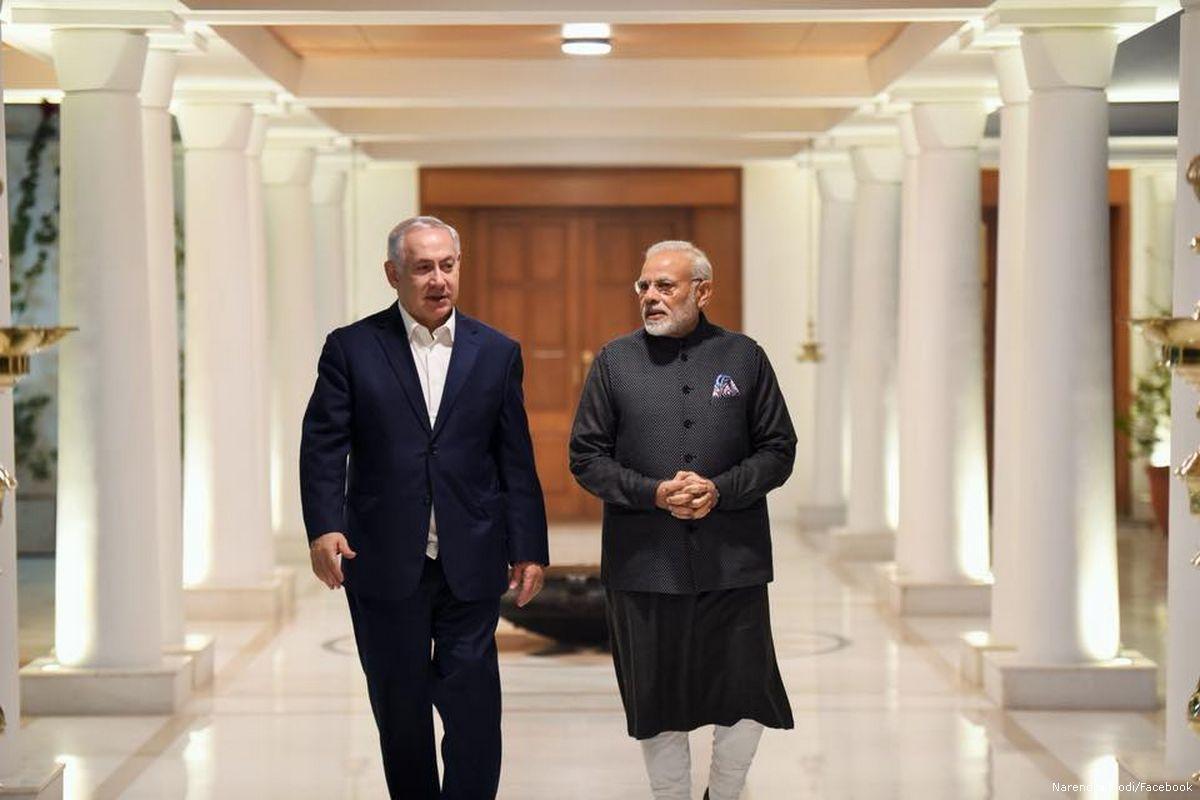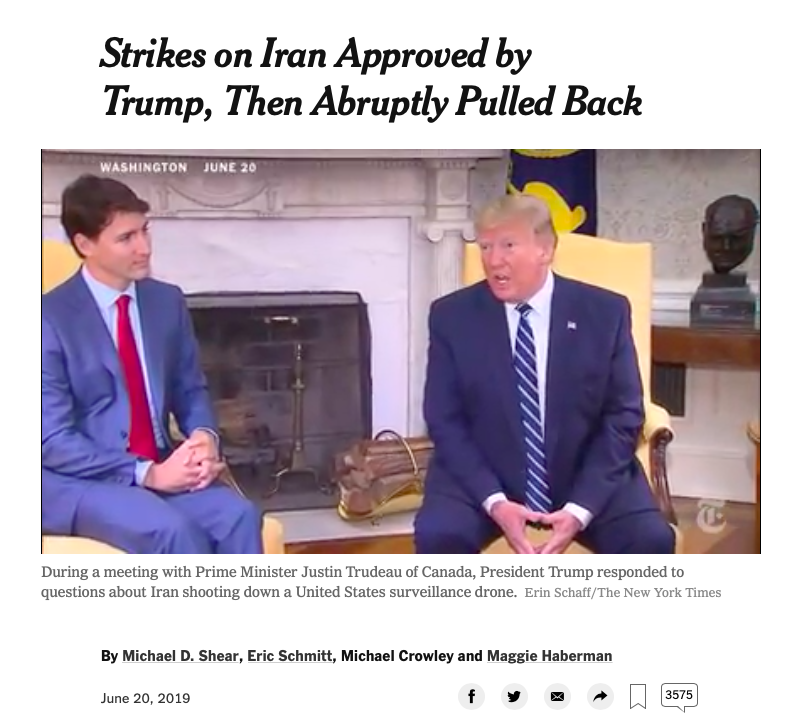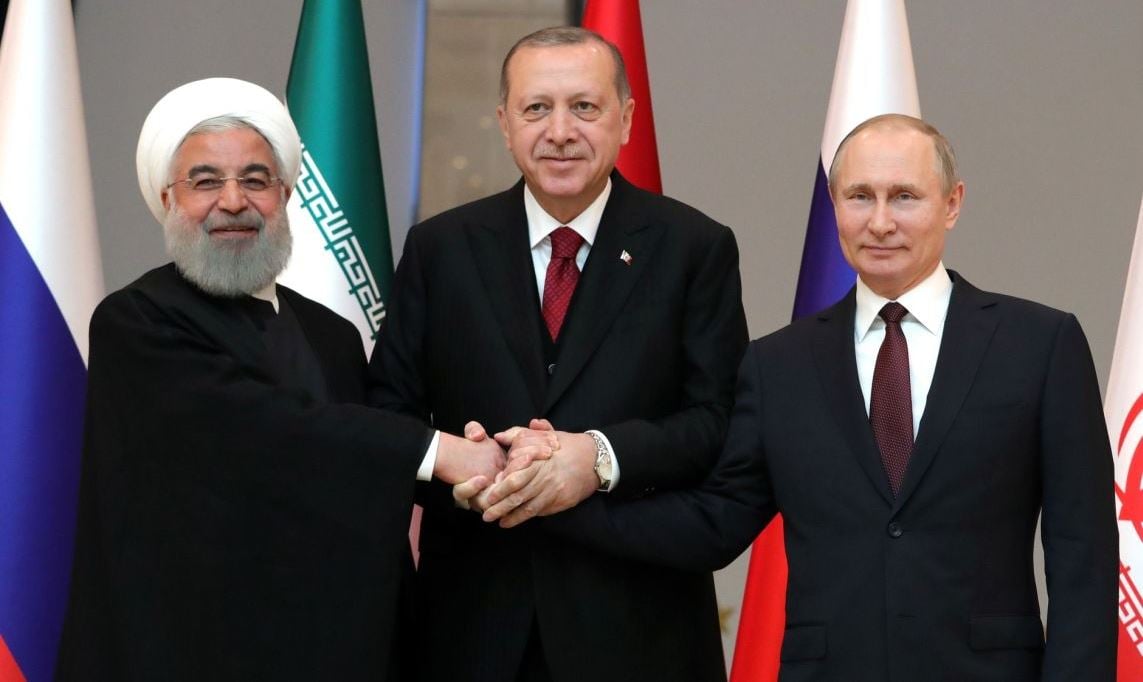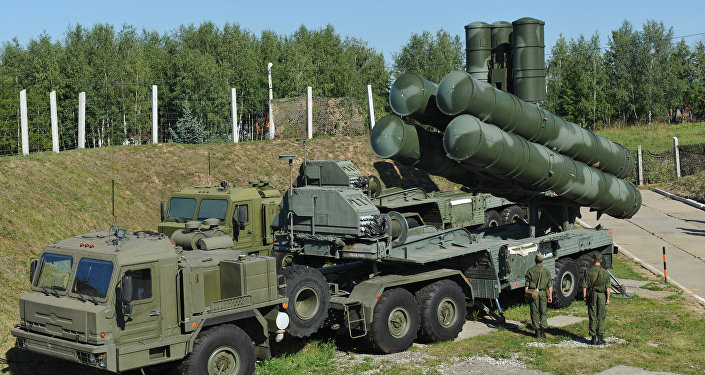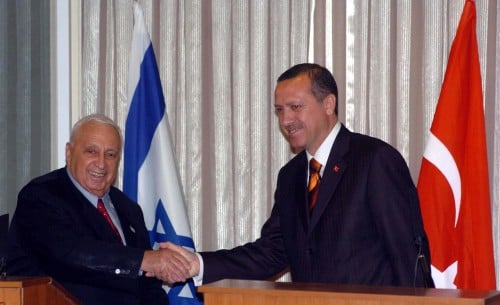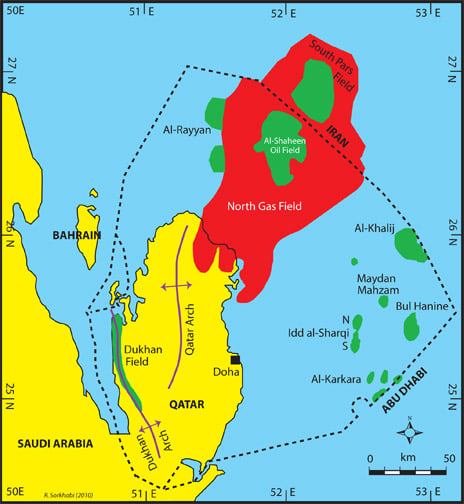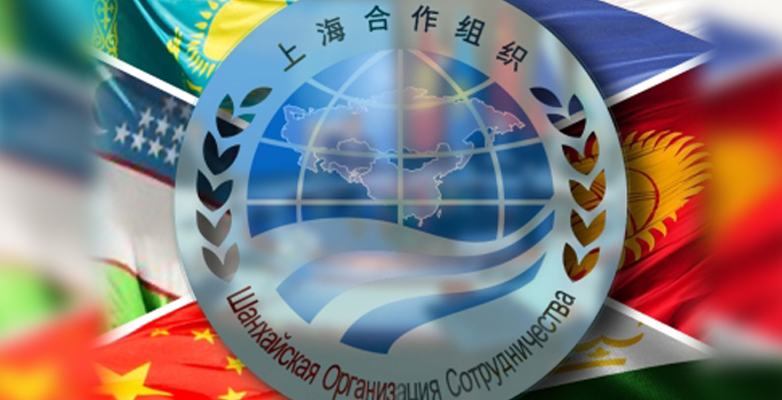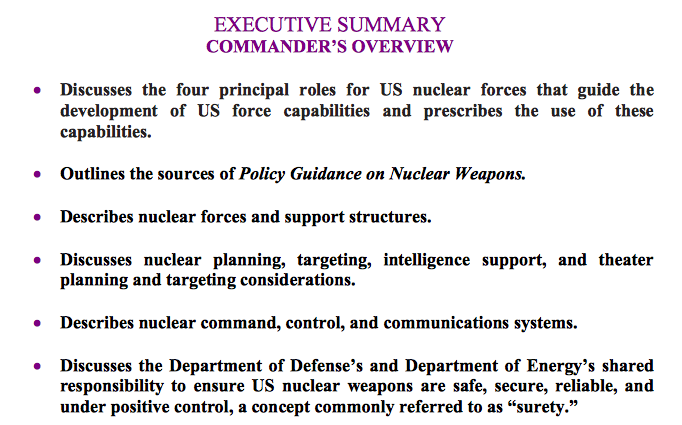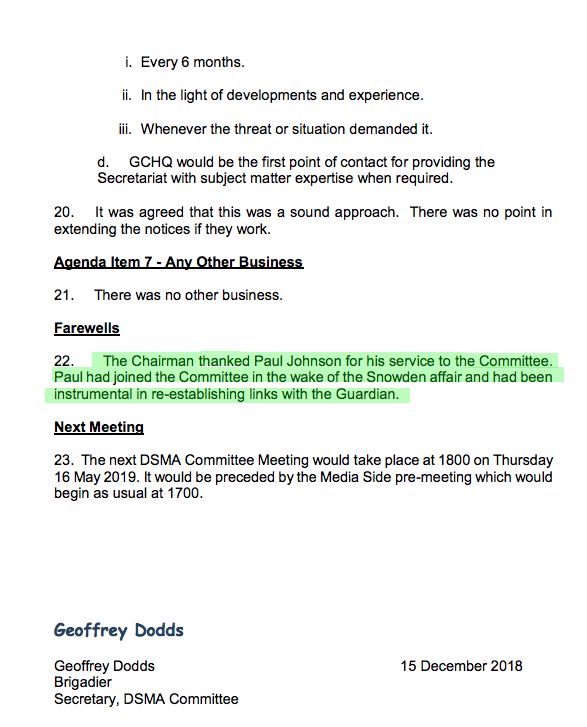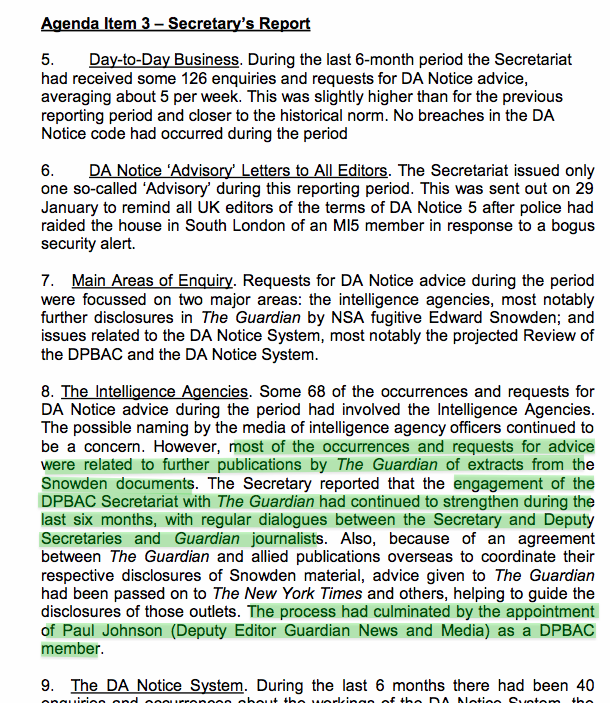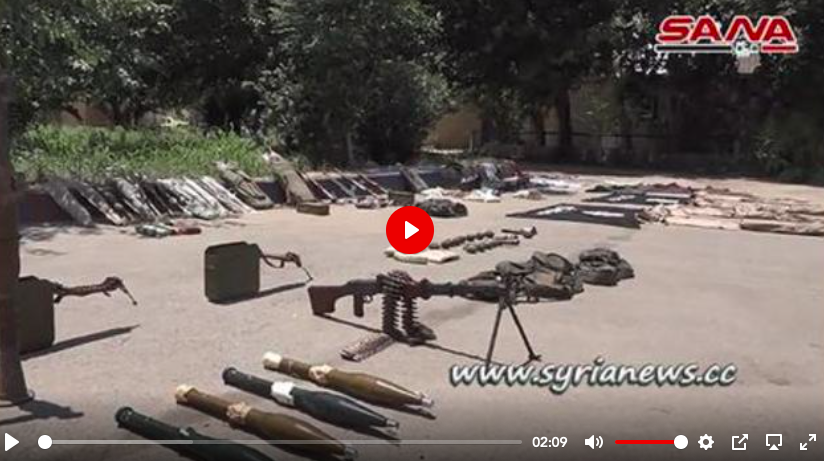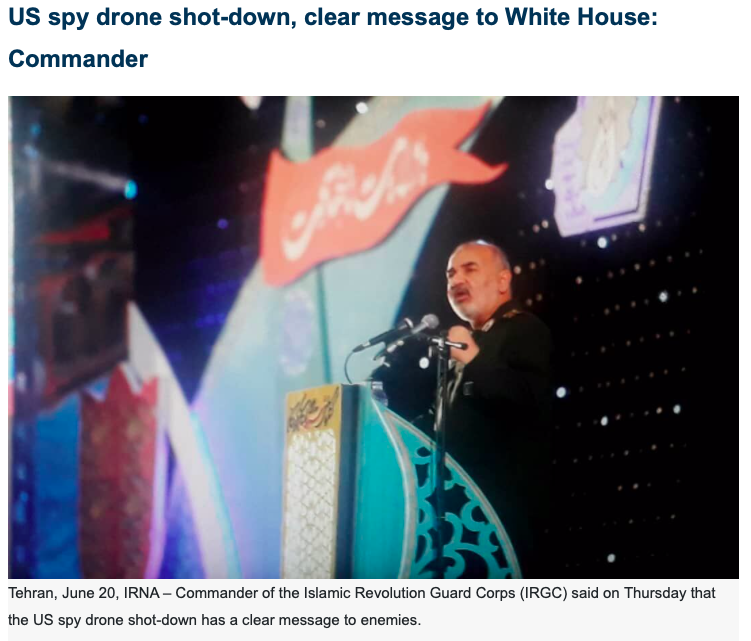As readers may recall, the USS Liberty was attacked by Israel during the six-day war in 1967, as it sailed at 5 knots in international waters off the Sinai coast. Of 294 crew members, 34 were killed and 171 wounded in the attack.[1] The Israeli government claimed and continues to claim that its military confused the Liberty with an Egyptian supply ship, the El Quseir, formerly used to transport horses.
The Israeli government apologized for this “tragic mistake” and agreed to pay compensation. Israel’s explanation for the “mistake” was at the time accepted at face value by the U.S. government.[2] The surviving crew members, however, consistently claim that the attackers knew they targeted an American ship they intended to sink, leaving no witnesses alive. One of the surviving crew members, James M. Ennes, Jr., published in 1979 the first book on this event, “Assault on the Liberty”, which demonstrated beyond reasonable doubt that the Israelis deliberately attempted to sink the Liberty in the knowledge that it was an American ship and that the U.S. authorities, led by President Lyndon B. Johnson, intended to cover-up this fact. These two opposing views cannot be reconciled. Most writings on the Liberty case focus on this dispute.
Yet, in 2003, a book by British investigative journalist Peter Hounam (“Operation Cyanide: Why the Bombing of the USS Liberty Nearly Caused World War III”) and its accompanying BBC documentary film from 2002 (“USS Liberty: Dead in the Water”), changed the framework of debate.
In his book, the author
(a) puts to rest the legend that the attackers mistook the Liberty for an Egyptian ship;
(b) demonstrates that both the Israeli and the U.S. governments have colluded in covering up the facts;
(c) that both governments have used lies and obfuscation as part of the cover-up; and
(d) that the Liberty’s true mission was never revealed. Documents declassified since then not only support Hounam’s revisionist narrative but suggest that the White House intended for the Liberty to be attacked and its crew killed.
In 2018, Joan Mellen published another book on the USS Liberty (“Blood in the Water: How the U.S. and Israel Conspired to Ambush the USS Liberty”). The author corroborates largely Hounam’s findings and complements these with new testimonies. She, too, concludes that the attack on the Liberty was a joint U.S.-Israel false-flag operation aimed at toppling the Nasser regime in Egypt.
While it is now generally accepted – including by former U.S. military leaders[3] – that the attack was no mistake but a deliberate attempt by Israel to sink an American ship, questions remain: Why was the USS Liberty sent to the zone of war and even denied military escort? What was the purpose of the attack on the USS Liberty? Why is this issue surrounded by such secrecy lasting until now? An attempt to shed some light on these questions will be made in this essay.
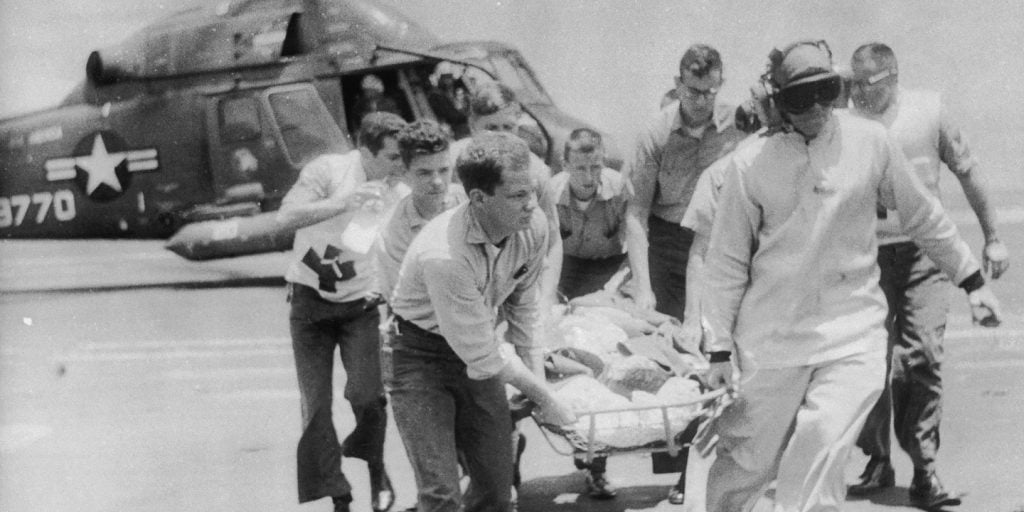
Initially, two motives were presented for Israel’s attempt to sink the Liberty: The first was that Israel wanted to eliminate witnesses to war crimes committed by Israeli forces in the Sinai.
The Liberty was supposed to have intercepted Israeli communications regarding these war crimes and had, therefore, to be eliminated. This explanation was based on three tenuous assumptions: One, that Israeli forces would discuss their war crimes over the radio; two, that the Liberty would not transmit such intercepted messages to Washington until later; three, that the United States, an ally, would be overly concerned by Israel committing war crimes against Egyptians.
In any case, as we will see, the Liberty was not tasked to intercept Israeli communications.
Another motive initially offered for Israel’s action was that it did not wish the United States to know about Israel’s plans to attack Syria. Admiral Thomas Moorer, for example, wrote in the July-August 1997 issue of The Link magazine:
Israel was preparing to seize the Golan Heights from Syria despite President Johnson’s known opposition to such a move…. And I believe [Israeli Defense Minister] Moshe Dayan concluded that he could prevent Washington from becoming aware of what Israel was up to by destroying the primary source of acquiring that information – the USS Liberty.[4]
Israel actually made no attempts to hide its plans to attack Syria. U.S. officials, such as U.S. Ambassador to Israel Walworth Barbour, reported on June 8, that he “would not, repeat not, be surprised if the reported Israeli attack [on the Golan] does take place or has already done so.”[5] Israeli Intelligence Chief Aharon Yariv told Harry McPherson, a senior White House aide who was visiting Israel at the time, that “there still remained the Syria problem and perhaps it would be necessary to give Syria a blow.”[6] Such suspicions were not based on interceptions by the USS Liberty but on direct contacts between the U.S. and Israel. In any case, the USS Liberty was not the only platform able to intercept Israeli communications. Such interception could be effectively be carried out from Cyprus.[7] And the Liberty was not tasked to intercept Israeli communications.
According to Michael B. Oren, former Israel Ambassador to the United States, whose article on the USS Liberty is posted on the Jewish Virtual Library, “there is no indication in the archives that the Israelis were troubled by the Liberty, much less considered it worthy of attack.”[8]
Even if we assume that Israel wanted to keep the U.S. in the dark about its war operations, it is difficult to believe that it would have attacked an intelligence ship of its main ally and benefactor, the United States of America, and murdered part of its crew of over 290 persons, without coordination with U.S. leadership. It is doubtful that any Israeli government would have taken such a huge risk for relatively minor gains.
Powerful actors in the United States pretended to criticize the President, Lyndon Johnson, and Secretary of Defense Robert McNamara for having bowed to the Jewish lobby by accepting Israel’s contrived claim of having mistakenly attacked the Liberty. According to their theory, the U.S. simply authorized the attack on the Liberty in order to please Israel. As we will see, far more weighty reasons compelled the U.S. to accept Israel’s explanation. But first, some basic facts.
- The lightly armed Liberty was sent without protection to a war zone
The Liberty’s intelligence operations were run by the NSA. But its security in the Mediterranean was under the responsibility of the Vice Admiral William Inman Martin.
The Liberty was ordered to sail from Abidjan (The Ivory Coast), where it had docked, first to Rota, Spain[9], and then toward the Sinai coast. The decision to send the Liberty to the Middle East was taken before the war broke out there on June 5, 1967.[10]
On the morning of June 5, the Liberty was already “steaming near its maximum speed of 13 knots and was midway between Rota and the Sinai Coast.”[11] Fearing for the safety of the ship and its crew, Dave Lewis of the Liberty formally requested from Vice-Admiral Martin a destroyer as an armed escort to accompany the ship.
The Liberty was essentially defenseless. It was not a warship. Martin denied Liberty’s request despite the fact that the war between Israel and Egypt had meanwhile broken out. The Liberty was to sail to a zone of war without protection. The official explanation given by Martin was that the Liberty was “a clearly marked United States ship in international waters” and “not a reasonable subject for attack by any nation.” In the unlikely event of an inadvertent attack, he said, “jet fighters from the Sixth Fleet carrier force could be overhead in less than ten minutes.”[12] When the Liberty was attacked, no jet fighters ever came to the ship’s rescue.
The reason for denying protection to the Liberty only later became transparent.
- The Liberty was sent to the Middle East on a contrived mission
Immediately after the attack, the Navy’s Public Information Office issued a news release, indicating that the Liberty, dubbed a “technical research ship,” was sent “to assure communications for U.S. Government posts in the Middle East and to assist in relaying information concerning the evacuation of American dependents and other citizens from the Arab-Israeli war area.”[13] This news release was only meant to deceive the public for it could not deceive the Israeli, Russian and Egyptian navies, who knew that the Liberty was one of the most sophisticated spy ships of the United States, and would not be sent to a war zone for such trivial chores.
A different story was leaked to the Associated Press. In a AP wire story from 9 June 1967, written by Bob Horton from aboard the aircraft carrier America, he quoted an unnamed officer who told him:
“To put it bluntly, [the Liberty] was there to spy for the U.S. Russia does the same thing. We moved in close to monitor the communications of both Egypt and Israel. We have to. We must be informed of what’s going on in matter of minutes.”[14]
That story, published in the garb of a “credible source”, was also contrived. For, as transpired during various inquiries and testimonies, the Liberty did not carry Hebrew-speaking officers or linguists able to monitor Israeli communications.[15] According to US Marine Bryce Lockwood, cited by Joan Mellen, he was specifically told by David Lewis of the Liberty, that in the case they intercept Israeli communications, they were to drop those. They were not to intercept communications of their ally.[16] As for the Arab-speaking linguists on the Liberty, they found themselves virtually out of work, as by June 8, the Egyptian army was already defeated by Israel and there were no Egyptian combat communications to be monitored.
Robert L. Wilson, one of the Arab linguists on board said years later, that
“there weren’t a lot of communications emanating from Egypt at that time.[17] […] Once we got on station, the Egyptians were dead, practically. There was no voice communications at all that we could pick up, except for the Israelis.”[18]
As the Liberty neared its target, Lloyd Painter of the Liberty commented:
“So we come six thousand miles to watch the war, and we finally arrive just as it’s grinding to a close.”
His shipmate Philip Armstrong added:
“You can be glad we’re late. Out there all alone, we’re an easy target. I hate to think where we would be now if we had been sitting off the Gaza Strip when the war broke out.”[19]
They had no clue what awaited them.
- Attempts to rescue the Liberty were stopped by the White House?
According to Liberty crew members, the first Mayday messages went out at 1:58 pm and 2:09 pm. Israel-time. While estimates on the duration of the attacks differ, it appears that they lasted until 3:15 pm, including series of attacks by aircraft and later by torpedo boats.
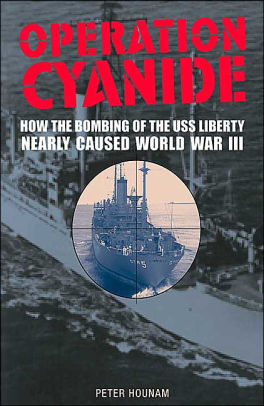
Joe Tully was the Captain of USS Saratoga (one of the aircraft carriers of the Sixth Fleet). According to Peter Hounam, Tully had kept personal copies of the Saratoga’s log and other records and confirmed that, at that time, 12 fighter-bombers and four tanker aircraft had taken off from his flight deck bound for the position radioed by the Liberty.[20] A minute after the aircraft were launched, Rear Admiral Lawrence Geis, Sixth Fleet carrier division commander, radioed Tully and ordered him to recall the planes.[21]
Tully was told by Geis he could launch again rescue aircraft in 90 minutes, only to have the aircraft recalled once more.[22] Until his death, Tully was furious that Washington prevented him from rescuing the Liberty but never discovered the reason for the recalls.[23]
What surprised Tully was that he and Captain Donald Engen, in charge of the carrier USS America, were never questioned about these issues.[24] Dave McFeggan, a Liberty survivor, who remains wary of speaking out about his role in the ship, was asked whether Vice Admiral Martin, the Commander of the Flagship of the Sixth Fleet, had foreknowledge of the attack. He said: “Of course he knew.”[25] This is a widely shared opinion of Liberty survivors.
Lt Commander David E. Lewis, surviving Liberty officer in charge of communications, said that when he was in hospital he was told to report to Admiral Geis.[26] Lewis learned that Geis had twice ordered the launching of aircraft to defend the Liberty. Each time he had received orders from the White House to recall them when they were already in the air. Lewis added:
“When the first were recalled by Robert McNamara, Geis thought McNamara was afraid that some of the aircraft might carry nuclear weapons. Geis immediately configured a flight with aircraft which could not carry nukes, relaunched and again notified Washington. Again McNamara ordered them recalled. Geis then requested confirmation of the order and the Commander-in-Chief, Lyndon Johnson, came on [the phone] and ordered them recalled, with the comment, ‘I will not embarrass our ally.’ Geis said that he was sure that ‘it would all be hushed and our conversation would be highly classified. With that, he asked me to keep it confidential, but [said] that he had to tell someone that he had tried to help us.’”
Hounam added that Lewis kept this story secret until Geis died 20 years later.[27]
Lewis’s account was corroborated by Julian ‘Tony’ Hart, who manned a U.S. Navy communications centre at Sidi Yahia, Morocco. He said that when the Liberty sent its Mayday message of being attacked, he relayed that message to Washington. Ten minutes later, after the identity of the Liberty was authenticated, another message to this effect was dispatched. At the same time Hart picked up a “flash message” from a carrier in the Sixth Fleet saying that they had launched ready aircraft [i.e. aircraft carrying nuclear weapons].[28] Hart added:
“Within three or four minutes – it was very, very quickly – we had a flash message come through from Washington to the Sixth Fleet commander saying to recall the aircraft. Sixth Fleet sent a message back to DC requesting authority to relaunch. There was then a period of maybe ten or 15 minutes, and then a voice communication link with Washington was brought up. The person identified himself on the phone as Secretary McNamara and wanted us to patch [him] through to Commander Sixth Fleet, [Rear Admiral Geis]. He was talking to McNamara and asking for permission to relaunch [any] aircraft and McNamara said no, that no aircraft were to be launched.[29] […] After 40, 45 minutes later there was a second voice communication with Washington DC to Com. Sixth Fleet. The person again identified himself as McNamara and the Admiral identified himself as being there. He was told to dispatch investigating aircraft in 30 minutes or 25 minutes.[30] He did not explain why such delay was necessary.
- Israel’s task was to sink the USS Liberty and kill its entire crew?
The explanation for the delay in coming to the Liberty’s assistance may have been given by a person who only agreed to speak to Peter Hounam under the name of Steve. He said that in 1967 he was stationed at Offutt Air Force Base in Omaha, Nebraska, working in a highly secret vault at the Strategic Air Command headquarters. He was cleared to read and handle the most sensitive signals traffic intercepted by the NSA and other agencies. He decided to reveal his knowledge in April 2002, and contacted therefore Liberty veteran Jim Ennes.[31] According to Steve the Israelis were frustrated that they could not sink the Liberty immediately:
The [Israeli] ground station […] reiterated that it was imperative that the ship be sunk immediately. All the time we heard the command centre expressing annoyance that the attack […] was taking far too long. That was their only concern – that the ship was staying afloat.[32]
Another person, James Ronald Gotcher III, declared in 2003 under penalty of perjury that while serving as a Sergeant in the U.S. Air Force, assigned to the 6924th Security Squadron at Da Nang, Vietnam, his unit received on June 8, 1967, a CRITIC message saying that the USS Liberty was under attack by Israeli aircraft. He said he had a clear recollection of reading transcripts of conversations between pilots and controllers. He said it was clear to him from these statements that (a) “the aircraft were flying a planned mission to find and sink USS Liberty”, and (b) that “the Israeli pilots were making every effort possible to sink USS Liberty and were very frustrated by their inability to do so.” He added the following statements
Approximately ten days to two weeks thereafter, we received an internal NSA report stating, in no uncertain terms, that the attack was planned in advance and deliberately executed. The mission was to sink the USS Liberty. A few days later, another message came through directing the document control officer to gather and destroy all copies of both the rough and final intercept translations as well as the subsequently issued report. After the destruction of those documents, I saw nothing further on this subject.[33]
A statement by Petty Officer Lloyd Painter confirmed that Israel’s mission was to not only to sink the USS Liberty but to exterminate all its crew. After the ship’s rubber life-rafts had been inflated and lowered overboard, these were also attacked:
I looked at the stern of the ship and saw one of the torpedo boats methodically machine-gunning one of our life-rafts that had floated back… I knew that had there been anyone in there they certainly wouldn’t be alive. It happened so fast it didn’t seem real. […] I was bewildered. I couldn’t understand why they would do it to us. I just didn’t understand a thing at that point.[34]
Several crew members of the Liberty, including Bob Farley,[35] testified that their communications were jammed and their communications were knocked out early on[36] by the Israelis in order to prevent them from calling for assistance. Yet, when the ship’s radiomen reported the apparent jamming of Liberty’s radios, their testimony was classified “Top Secret” and was not followed up by the U.S. authorities.[37] This is strong evidence that the identify of the ship was known to the attackers and that the U.S authorities tried to cover-up this fact.
When Hounam interviewed former Secretary of Defense Robert McNamara – long retired – for a BBC documentary and asked him to comment on the Liberty incident, McNamara said “I have nothing to say on the Liberty. I don’t recall it, but everything…well, I’m not going to go further. I’m not going to say anything on the Liberty.”[38] When Hounam pointed out that the surviving crew would like Congress to investigate the Liberty attack, McNamara looked annoyed and said:
I am not saying anything about the Liberty period. The reason I don’t…You’ve got to deal with me fairly on this, now. Don’t have any of this – anything about the Liberty – on the tape….because I don’t know what the hell happened and I haven’t taken time to find out. There are all of those claims that we sent planes, that planes were going out and we turned them around and that we intentionally allowed the Israelis to sink the Liberty. I know nothing about it. I don’t want to say I didn’t at the time, but today I have no knowledge of it.[39]
George Golden, the Liberty’s chief engineer, was informed of the following when the damaged ship reached Malta:
“We were hearing we were the guinea pigs, to get shot up, to make it look like Egypt was doing this so the United States could step in. […] We were told that the attack was supposed to have looked like it was the Egyptians, and that was going to give our country an excuse to get in there to help Israel.”[40]
Asked how he felt when he was told all this about being guinea pigs, Golden answered:
“I thought I was going to cry, because I couldn’t believe something like that would happen. I didn’t think our government was that way.”[41]
Asked if he was told that McNamara and [President] Johnson knew about that and that the orders not to help the Liberty came from as high as the President, he said “Yes.” He added:
Some of our people from the States came over when we came into Malta. I happened to know two of them. One of them was with me when we put the Liberty back in commission…and he said, “George, they really did it to you, old boy” and I said “What are you talking about?” And he said “You were a damned guinea pig.” And that’s all he would say.[42]
Golden said that two or three years before the Liberty’s Captain McGonagle’s death, he confided in Golden that it was the President and McNamara who sent the Liberty from over in Africa [to the Middle East], ”to have this happen.”[43] McGonagle refused all along to reveal what he knew about the real mission of the Liberty. He apparently left no record of what he knew of his own country’s role in the incident.[44]
- What was Operation Cyanide?
According to several witnesses, the Liberty was entangled in a covert project involving United States submarines whose presence within the war zone has never been officially admitted.

Israeli Motor Torpedo Boats (MTBs) in formation, c. 1967. These were the MTBs that attacked USS Liberty. (CC BY-SA 3.0)
Although the identity of the submarines has not been definitely established, two particular submarines came in question: The USS Amberjack SS522 and a Polaris submarine, the USS Andrew Jackson, carrying nuclear weapons.[45] To the day of his death, the captain of the USS Amberjack, Augustine Hubal, refused to discuss what his submarine was doing out there so close to the Liberty.[46] Not only did the U.S. government never admit the presence of any submarines at this time and location, but the witnesses who admitted to have served in these submarines did not reveal the precise mission of their vessels. One of the Liberty survivors, Charles ‘Chuck’ Rowley, confided to his shipmate Jim Ennes that he was cleared for “a secret submarine project under codename Cyanide.”[47]
The likely presence of a submarine that shadowed the Liberty was repeatedly mentioned in James M. Ennes’ book. Someone on the Liberty charted a mysterious Contact X on the ship’s Coordination Chart. The “unidentified object had been tracked for days until it merged with Liberty’s track, when suddenly the plot was discontinued,” wrote Ennes. He wrote that he asked his shipmate Jim O’Connor, who was security-cleared, what X represented. O’Connor claimed ignorance. It was never revealed who charted the coordinates of Contact X on the Liberty’s and knew what Contact X represented. Ennes guessed that it was a submarine with which the Liberty had a rendezvous.[48] Ennes wrote that an unnamed crew member of the submarine blurted out a few weeks after the attacks in the cafeteria at Portsmouth Naval Hospital, that the commanding officer of the said submarine “activated a periscope camera that recorded Liberty’s trauma on movie film.” Ennes added that “three persons in positions to know have confirmed the story that a submarine operated near Liberty.”[49]
A highly secret document dated 10 April 1967 [that is, before the Liberty attack] and discovered by Jim Ennes in the Lyndon B Johnson Library in Austin, Texas, among papers filed about the USS Liberty, shows only one item from the minutes of a meeting held on 7 April 1967 by a group called the 303 Committee.[50] Richard Helms, at the time director of the CIA, explained after his retirement 35 years later the role of this committee. It was, he told Peter Hounam, “simply a device for examining covert operations of any kind and making a judgment on behalf of the President so he wouldn’t be nailed with the thing if it failed.”
The meeting of the 303 Committee was chaired by Walt Rostow, Johnson’s national security advisor. General Ralph D. Steakley attended the meeting and briefed the Committee about a sensitive military project called Frontlet 615. In the document, that particular item is encircled by a pen with a handwritten note saying: ‘Submarine within UAR waters.”[51] [UAR = United Arab Republic, the name given at the time by Egypt to itself] The document thus reveals the existence of a top secret project authorized by the White House and involving the future deployment of a submarine into Egyptian waters. Was the number 615 a short code for June 15th, the initially planned date for the war against Egypt?
Image below: Commander W.L. McGonagle in his damaged cabin after the attack (Source: Public Domain)

Presuming that the United States would inform its ally Israel about its military project Frontlet 615 or Operation Cyanide and about the movements of the USS Liberty to the area, there is no basis for the belief that Israel was kept out of the loop and attacked the USS Liberty by mistake.
Several Liberty survivors actually assumed in their testimonies that Israel, a U.S. ally, had been informed about their presence in the area. For that reason they were not concerned when they saw Israeli planes circling again and again over the ship for hours before the attack in an attempt to identify the ship.
The Liberty’s American flag was clearly visible in the breeze and the ship was marked. There was no way to mistake the ship for anything else. No other ships were at that time in the area. For unexplained reasons, the Liberty’s captain, McGonagle, was reluctant to report these repeated visits by the Israeli aircraft to the Sixth Fleet.[52] He later attempted to minimize the nature of the Israeli attack and was criticized by Liberty survivors for participating in the cover-up of the incident. Only before his death, he admitted having betrayed his crew.
When Peter Hounam asked Rafi Eitan, who was the head of Israeli Secret Service in 1967, if he had ever heard of an Operation Cyanide in 1967, Eitan asked, “Operation Cyanide? If I heard about it? I have. So?” Hounam then asked what it was. Eitan waited a while before saying: “I suggest we stop the interview here.” He then almost shouted: “What do you say? Why do you want it?“ Hounam: ”I just want to know what it was. Why won’t you be able to speak about Operation Cyanide? It’s 34 years since.” After a long pause Eitan said with emphasis: “Signature,” making a gesture with his hand as though he was signing the Official Secrets Act, “and loyalty to my country.”[53]
- U.S. bombers on the way to attack Cairo were recalled in midair
Operation Cyanide and Frontlet 615 referred to a U.S. plan to bomb Cairo and topple the Nasser regime. Hard evidence comes from David Nes, at the time chargé d’affaires at the U.S. Embassy in Cairo. In the afternoon of 8 June, he received a message notifying him that the USS Saratoga had launched bombers which were heading his way.[54] After his retirement he told Peter Hounam:
“We got one of those ‘flash’ messages saying Navy ship Liberty had been attacked, presumably by Egyptian planes, and that a retaliatory launch was under way. […] But within a very short period of time another ‘flash’ telegram came through saying that the attack [on the Liberty] had been identified as Israeli and that was the end of that.”[55]
The exact wording of the telegram bears noting. Nes said that the bombers were heading his way on the presumption that the Liberty had been attacked by Egyptian planes. It is, however, unthinkable that the U.S. military would make such a presumption without conclusive evidence and launch within minutes bombers to attack a sovereign state, without prior planning and without authorization from the White House.
Several witnesses who were on the USS Saratoga testified that planes which took off from that aircraft carrier appear to have carried nuclear bombs. Among them were Brad Knickerbocker, at the time a young aviator on the Saratoga;[56] Mike Ratigan, a center-deck catapult operator;[57] Jay Goralski, a U.S. reporter;[58] and b, correspondent for UPI.[59]
Charles ‘Chuck’ Rowley, who survived the Liberty attack, said that a pilot from the USS America had told him that he had flown on that day a jet with nuclear weapons and was ordered to head for Cairo.[60] Joe Meadors, also a Liberty survivor, said that when he arrived in Crete on the way to be hospitalized for his injuries, some of the U.S. ground crew told him that they had refueled a U.S. fighter, which, to their amazement, had an atomic bomb underneath.[61] There is no apparent reason for these witnesses to invent their stories.
Moe Shafer, a Liberty veteran living in Marietta, Georgia, told Hounam that unlike most of the injured from the Liberty, he was flown by helicopter to the USS Davis. Shafer said that the next morning Vice Admiral Martin came to see him when he sat on his bunk with two or three other injured men. According to Shafer, Martin told him that “four [jets] were on their way to Cairo loaded with nuclear weapons”, that “we were three minutes from bombing them [the Egyptians]” and “that the jets could not land back on the carrier with nuclear arms and they had to land in Athens.”[62] There was no reason for Shafer to invent such a story.
It is evident that sending planes within minutes of the Liberty attack to bomb Cairo could not have been a considered reaction to the attack, but a planned operation using the Liberty attack as pretext. It was, of course, necessary to recall the attack planes when it transpired that Israel did not succeed in destroying the Liberty and its crew.
- The Liberty’s crew members were warned not to talk about the incident with anyone
While Israeli officials claimed that Liberty had been attacked “by mistake” and the U.S. Government accepted this explanation, the Department of Defense and the Navy sternly warned the crew of the Liberty and others not to speak to anyone about the attack, ever. They were threatened with imprisonment or worse. The cover-up began even before the damaged Liberty arrived in port. Admiral Isaac Kidd was ferried aboard the limping Liberty to begin conducting the official inquiry.[63] Petty Officer Philip Tourney recalled:
“Admiral Kidd ordered me not to see (sic) what I had seen or I would be in the penitentiary of worse – meaning, I thought, death.”
CT Ronald Grantski recalled:
“I don’t know what kind of pressure the officers were under, but we were told over and over never to say anything about the attack to anyone, ever, and told never to think that time had run out, because it wouldn’t. And we were scared.”
Robert ‘Buddha’ Schnell was also debriefed by Admiral Kidd, then told not to talk to anybody and to be especially careful to avoid the press. He said that when he was debriefed on leaving the Navy in 1968,
“they said they would be checking on me and they also told me I could not leave the continental U.S. for ten years because of the attack.”
Richard ‘Larry’ Weaver, another Liberty survivor who was severely injured in the attack, sitting in a wheelchair in the hospital, was confronted by a three- or four-star Admiral.
“He took the stars off his collar and said, ‘Richard, do you know anything? Tell me everything you know.”
After he told him what he knew, the Admiral said
“Fine, Richard”, put his stars back on and said: “If you ever repeat this to anyone else ever again you will be put in the prison and forgotten about.”[64]
William LeMay was also badly wounded during the attack. He woke up in a hospital with a tag on his arm that said his name was Smith. LeMay asked for it to be corrected. He was told,
“That is your name for the time being and you never served on the USS Liberty.”[65]
To prevent unauthorized contact with the outside world, guards were stationed at each door of the Liberty men’s [hospital] ward, wrote James M. Ennes.[66]
Ken Ecker, a Liberty survivor, posted the following statement on the website of the USS Liberty veterans:
Immediately following the attack I was threatened with court-martial if I discussed the incident with the press or anyone else. One of the warnings was also not to discuss the attack even with my immediate family or friends. In my case these warnings were repeated upon my transfer from each duty station I left along with the standard security clearance de-briefing. I was also periodically taken aside and reminded of the original threat even when not being transferred.[67]
George Golden described to Peter Hounam how, periodically, he would be threatened and people would visit him, who he believed were from the CIA, demanding he hand over documents he had kept. Did he think the authorities would still try to silence him? “Yes, I do”, he said firmly, “because of some phone calls that I got.”[68]
Another person who feared for his security and was, therefore, unwilling to disclose what he knew about the case, was another Liberty veteran, CT David McFeggan, whom Peter Hounam discovered working as an accountant in Chicago. McFeggan declined a face-to-face meeting with Peter Hounam but spoke with him “very guardedly” on the phone. He told Hounam that it was hard for other people to understand why there was so much secrecy, but there was still danger for him in talking.[69] One of McFeggan’s concerns was that there was no one he could rely upon to support his story if he were to speak freely:
“The people who would back me up, Jim O’Connor and Dick Blue [sic], are both dead.”
When asked about Operation Cyanide, he said “I can answer nothing about that.” McFeggan said he was so deeply affected by his memories of what happened that he breaks down and cries like a baby.[70]
Patricia Blue, wife of NSA employee Allen Blue, who died in the attack on the Liberty, said she was picked up by NSA officials in Maryland immediately after the attack and taken to her home. She said:
”They [the NSA people] never left for six weeks. They answered the phones because they did not want me to talk to any reporters […] They did not want me speak…and I never did.”[71]
A Liberty seaman, Ronald Grantski, said:
“I don’t know what kind of pressure the officers were under, but we were told over and over never to say anything about the attack to anyone, ever, and told never to think that time had run out, because it wouldn’t. And we were scared.”[72]
In parallel with systematic efforts to muzzle Liberty survivors, officials attempted to generate deceptive counter-narratives. Chief Petty Officer Joseph A. Benkert of the Liberty, related to James M. Ennes how he was manipulated for such a deceptive act.
At first, Benkert was informed by his seniors that he could grant press interviews if he chose to. Benkert did not want, however, to be interviewed unless he was free to speak candidly and without restriction. So when reporter Clifford Hubbard of Norfolk’s Virginian-Pilot contacted him, he politely declined. He soon, however, received a call from Commander David M. Cooney, who ordered Benkert to “report promptly for a press briefing” at CINCLANFLT headquarters. Before this “press briefing”, with Rear Admiral Renken present, Benkert was asked every conceivable question about the ship and the attack and reminded that he could neither discuss the ship’s mission nor Vice Admiral Martin’s promise to provide jet fighter protection or the failure of such protection to arrive. He was not allowed to mention the machine-gunning of the life rafts nor that napalm was used in the attack. He was not permitted to mention that the American flag was flying and that the wind was blowing. His press interview was conducted in the presence of several “minders”, such as Commander Cooney, Admiral Renken and other Navy officials that Benkert didn’t recognize. After his interview was published, he said: “I don’t know where they got the quotes for that story. They didn’t come from me. They didn’t use what I said and they made up stuff I didn’t say. At least ninety percent of that story is bullshit.”[73]
- Was an American involved in the attack on the Liberty?
George Golden revealed to Peter Hounam that after arriving with the limping Liberty to Malta, he met an American “four-striper”, who, to his astonishment, told him that he had been in the Israeli war room in Tel Aviv during the attack on the Liberty.
“I don’t remember his name”, he said. “I remember he was a big, fat person. They [the Israelis] all left the war room for a period of time; he stayed, and when they came back the planes and the boats were hitting [the Liberty]. What makes that stand out to me more than anything else was the fact that he said they should have sunk the whole ship, they had the power to do it, and the Liberty should not have gotten away. It was, to me, like he was on somebody else’s side, not America’s side when they were shooting up our ship.”
It was never established who this “four-striper” was and what role he played in the Israeli war room during the attack on the Liberty.
- Why was the Liberty attacked?
Evidence that the U.S. was involved in both planning and executing the Six-Day war came from several witnesses interviewed by author Peter Hounam. One of them was Joe Sorrels, whom he found living in Naples, Florida, as a successful manager of golfing and leisure resorts. Sorrels told Hounam a story that may offer additional light on the Liberty issue. His testimony supports the view that the initiative for attacking the Liberty had not come from Israel, but from the United States.

Sorrels said his mission was named Operation Cyanide. Sorrels told Hounam that this was a “joint plan by elements of military intelligence in Israel and the United States to engineer a war with Egypt and depose its leader Gamal Abdul Nasser who, the U.S. believed, was a dangerous puppet of Moscow.”[74] Hounam admits that he initially had doubts about the credibility of this witness:
Was [Sorrels] telling the truth? It is difficult to fathom any motive for him making up the extraordinary story he told me in four telephonic interviews conducted over a period of 15 months. He sought no payment and did not want to meet face to face. He was reluctant to volunteer much in the way of detail, but he differentiated between what was speculation and what he knew from his direct experiences. Furthermore, what he disclosed match-es other evidence.[75]
Sorrels said he was secretly sent in August 1966 to Israel as an adviser to the Israeli Army. He discovered on arrival that he was part of a multi-national force of so-called ‘advisers’ from Australia and Britain. Senior officers from the U.S. were in charge:
“I had a briefing on a weekly basis. I made a weekly report directly to an individual but I cannot give you his name because he’s still wired [working for the U.S. intelligence]. They were equally tight-tipped […] I asked if that meant Britain was going to be involved in the forthcoming war. That was my read on it”, he said.[76]
Hounam:
“From [Sorrels’] viewpoint, it seemed the Israelis were responding to pressure from the United States to eradicate Nasser; Israel was not the prime mover.”[77]
When Hounam asked Sorrels how Operation Cyanide had come about, Sorrels’ language became more elliptical. Sorrels:
”My understanding was that there had been some commitments unfulfilled that were discussed. I was far beneath that echelon…It’s just that at the time we’d committed … we were selling a bill of goods as [regards] alliance, capability and commitment to the Israelis.”
Did the United States want to get rid of Nasser and engineer a confrontation, asked Hounam.
“Hell, yes. There were a lot of things going on to stimulate and provoke. We’ll never know exactly the root of where that came from.”[78]
Sorrels repeated that Operation Cyanide was a secret plan to start a war against Egypt. He said Israel’s only motive was to grab territory, nothing more, and it was elements in the U.S. who were pushing them to invade Egypt.[79]
Sorrels pointed out that not only the United States, but the United Kingdom too, was covertly involved in the 1967 war to topple the Egyptian regime. Evidence presented by Hounam, independently of Sorrels’ views, suggests that this was indeed the case[.80]
Like many others, Peter Hounam wondered what prompted Israel to suddenly halt its attack on the Liberty. He recalled what Liberty survivor David McFeggan had told him: “I won’t tell you who. The only name I’ll give you is Moshe Dayan. […] Dayan was the biggest patriot and the biggest saviour in Israel being a country.” This statement by a Liberty survivor puzzled Hounam. McFeggan wouldn’t elaborate. Was Dayan informed at the last moment that the United States was sending bombers to nuke Cairo on the contrived presumption that the Liberty had been attacked by Egypt? Was Dayan concerned that the Soviet Union could retaliate by bombing Israel? Did heorder to halt the assault on the Liberty? That might have been what went through McFeggan’s mind.[81] We do not know and will perhaps never know the reason for Israel to halt its attack, as the main protagonists are either dead or determined never, ever, to disclose what they know.
Concluding observations
The true story of the USS Liberty demonstrates the callousness of which political and military leaders are capable. It belies the widely held belief that “our leaders wouldn’t do such things to us.” Realizing the callousness of U.S. leaders not only toward citizens of other nations, but towards their own citizens, military as well as civilians, should help Americans shed illusions about the morality of their political and military leaders.
Realizing the degree of callousness of which they are capable may help to expose the mass-murder of 9/11. Such a conclusion is not meant to exculpate Israeli civilian and military leaders, who agreed to murder defenseless Americans as a hired guns of the United States. A few days after the 1967 war, the United States began negotiations with Israel for delivery of fifty Phantom F-4 fighters.[82]
In August 1989, Israel received her first consignment of these fighters.[83] State Department officials with whom James M. Ennes discussed, denied any connection between this military assistance and the Liberty attack.[84] Yet, it was in 1967 that France stopped its military deliveries to Israel and was replaced by the United States.
Another useful aspect of the Liberty story is to expose a widely held myth about the relation between United States and Israel.
It has become fashionable to argue that the Zionist lobby dominates U.S. foreign policy. Thus, Liberty veterans and well-meaning sympathizers contend that the cover-up of the Liberty attack by the U.S. administration derives from its fear of embarrassing Israel and losing American Jewish votes. The Liberty story, as presented in these pages, does not support this theory. The evidence confirms what some of the Liberty survivors suspected: That they were deliberately sent by the U.S. Government to die in a joint U.S.-Israeli false-flag operation. Presenting Israel or its lobby as those who determine or dictate U.S. foreign policy, is, however, a useful method used by the U.S. oligarchy to deflect public opinion from its own criminal activities. As for Israel, it apparently gains respect and fear by maintaining the fiction that it can dictate policy to the United States.[85]
*
Note to readers: please click the share buttons above. Forward this article to your email lists. Crosspost on your blog site, internet forums. etc.
Elias Davidsson is an Icelandic citizen living in Germany. He is a composer, human rights and peace activist and author of several books on 9/11 and false-flag terrorism.
Notes
Where an end note is followed by a number preceded by the sign #, that source can be consulted on the internet address www.aldeilis.net/liberty/####.pdf (replace the #### by the number).
- There is a wealth of literature on the case of the USS Liberty. A good starting point is the Wikipedia entry 13 on the Attack on the USS Liberty.
- “U.S. military officials said Saturday that they were satisfied Israel’s attack Thursday on the U.S. communications ship Liberty was one of the tragic mistakes of warfare.” (UPI dispatch, June 10, 1967, cited in James M. Ennes, Assault on the Liberty, p. 155)
- See Testimony by Rep. John Conyers, House of Representatives, Congressional Record, p. E1886-7, 11 October 2004, #2793; also Memorandum by Admiral Thomas H. Moorer, “Attack on the USS Liberty”, 8 June 1997, http://www.ussliberty.org/moorer3.htm
- Cited by Michael B. Oren, The USS Liberty Incident: “The USS Liberty: Case Closed”, Jewish Virtual Library, https://www.jewishvirtuallibrary.org/quot-the-uss-liberty-case-closed-quot
- LBJ, National Security File, Box 104/107, Middle East Crisis: Jerusalem to the Secretary of State, June 8, 1967; Barbour to Department, June 8, 1967; Joint Embassy Memorandum, June 8, 1967 (cited by Michael Oren, The USS Liberty Incident: “The USS Liberty: Case Closed”, Jewish Virtual Library, https:// www.jewishvirtuallibrary.org/quot-the-uss-liberty-case-closed-quot)
- Ibid
- Peter Hounam, Operation Cyanide – Why the Bombing of the USS Liberty Nearly Caused World War II, Satin Publications, London, 2003, p. 110
- Michael B. Oren, op. cit.
- Operation Cyanide, p. 189
- From a Press Statement issued by the White House on the day of the attack, cited in Operation Cyanide, p. 104
- Operation Cyanide, p. 171
- Ibid
- Memorandum for the Record by Louis W. Tordella, Deputy Director of the NSA, 8 June 1967, #2786
- Associated Press wire on the USS Liberty, 9 June 1967, #2780
- Questions by General Carroll, Director, DIA, and Answers by G Group, 27 June 1967, #2787
- Joan Mellen, Blood in the Water: How the U.S. and Israel conspired to ambush the USS Liberty, Prometheus Books, 2018, p. 118
- Oral History Interview with Robert L. Wilson of the G Group, Doc. NSA-OH-15-80, 6 May 1980, p. 7, #2789
- Ibid, p. 10
- James M. Ennes, Jr., Assault on the Liberty, Ivy Books, 1979, p. 47-48
- Operation Cyanide, p. 91
- Ibid
- Ibid
- Operation Cyanide, p. 91
- Operation Cyanide, p. 174
- Joan Mellen, Blood in the Water, p. 223
- Operation Cyanide, p. 175
- Ibid
- Operation Cyanide, p. 176; Assault on the Liberty, p. 89-90
- Ibid
- Operation Cyanide, p. 177
- Operation Cyanide, p. 159
- Operation Cyanide, p. 161
- Declaration by James Ronald Gotcher III, 2 September 2003, www.aldeilis.net/liberty/gotcher.pdf
- Operation Cyanide, p. 37; BBC Documentary “Dead in the Water”, minute 29’40”
- Oral History Interview, Document NSA-OH-25-80 of June 13, 1980
- Oral History. Interview of Henry L. Wilson, Document NSA-OH-15-80 of May 6, 1980
- Assault on the Liberty, p. 184
- Operation Cyanide, p. 237; BBC Documentary “Dead in the Water”, minute 28’40”
- Operation Cyanide, p. 237-238
- Operation Cyanide, p. 240
- Operation Cyanide, p. 241
- Ibid
- Operation Cyanide, p. 242
- Operation Cyanide, p. 246
- Operation Cyanide, p. 124, 128
- Joan Mellen, Blood in the Water, p. 115
- Operation Cyanide, p. 113-114
- James M. Ennes, Jr., Assault on the Liberty, p. 46-47
- Ibid, p. 73-74
- Operation Cyanide, p. 115; BBC Documentary “Dead in the Water”, minute 46’30”
- Ibid
- James M. Ennes, Assault on the Liberty, p. 63
- Operation Cyanide, p. 224-225; and BBC Documentary “Dead in the Water”, minute 48:30”
- Operation Cyanide, p. 184
- Operation Cyanide, p. 185
- Operation Cyanide, p 180-181, 184
- Operation Cyanide, p 181-182
- Operation Cyanide, p 182
- Operation Cyanide, p 182-183
- Operation Cyanide, p 183
- Operation Cyanide, p 183
- Operation Cyanide, p. 221
- BBC Documentary “Dead in the Water”, minute 39’20”
- Operation Cyanide, p. 46
- Operation Cyanide, p. 47
- James M. Ennes, Assault on the Liberty, p. 167
- http://www.ussliberty.org/ecker.htm
- Operation Cyanide, p. 243
- Operation Cyanide, p. 192
- Operation Cyanide, p. 193
- Operation Cyanide, p. 43
- Operation Cyanide, p. 46
- James M. Ennes, Assault on the Liberty, p. 205-206
- Operation Cyanide, p. 196
- Operation Cyanide, p. 196-7
- Operation Cyanide, p. 197
- Operation Cyanide, p. 199
- Operation Cyanide, p. 200
- Operation Cyanide, p. 201
- Operation Cyanide, p. 201-210
- Operation Cyanide, p. 268-269
- The New York Times, December 19, 1967
- The New York Times, September 7, 1969
- James M. Ennes, Assault on the Liberty, p. 241
- Israel’s military power is highly exaggerated. As described by experts, even a non-state entity such as the Hezbollah (Lebanon) was able to challenge Israel’s military power. See, inter alia, Mark Perry and Alastair Crooke, “How Hezbollah Defeated Israel: II. Winning the Ground War”, Conflicts Forum, 27 October 2006

 Can you
Can you 
